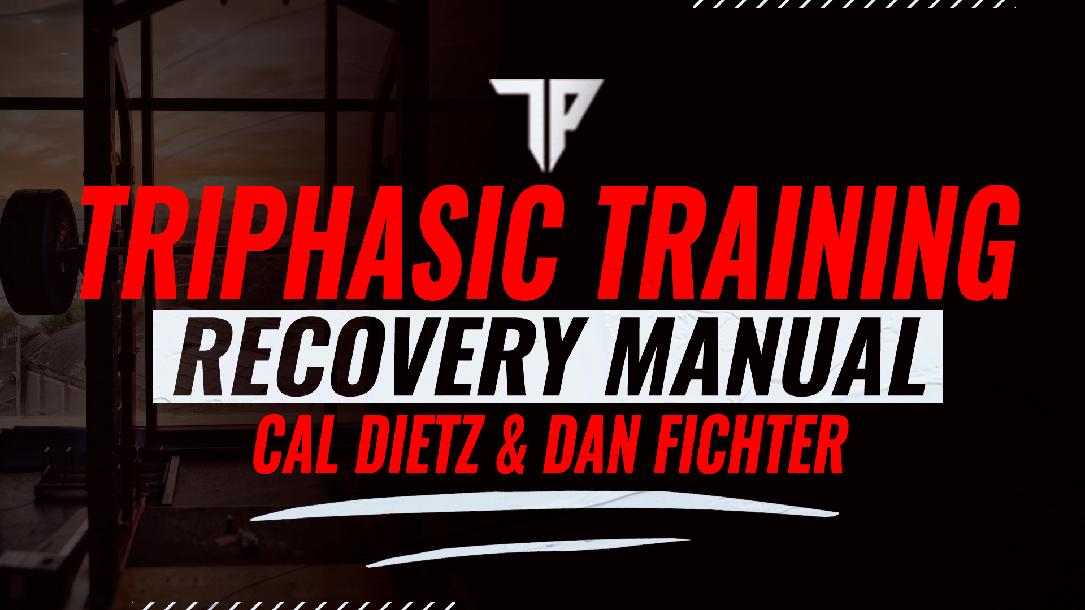Triphasic Training Principle 36
By Cal Dietz
Back in 2011, I stumbled upon something that completely changed how I approached recovery for athletes — something I now call the Rest Recovery Gap Window Principle.
At the time, I was deep into running recovery experiments with my athletes, trying to figure out which methods actually worked. I had access to an OmegaWave system, which was an incredible tool for measuring recovery and nervous system readiness. Over the course of three to four years, I ran well over a thousand tests using the OmegaWave, gathering data on what helped athletes truly bounce back — and what didn’t.
During those summers of intense training, we tested all the classic recovery tools — compression sleeves, light cycling, cold tubs, you name it — right after workouts. But what we kept seeing on the OmegaWave data the next day was surprising:
athletes who did immediate recovery methods were actually less recovered the following morning.
At first, that didn’t make sense. Recovery methods are supposed to help, right? But the data was consistent.
Then we noticed something else. Some athletes, due to class schedules or personal preference, couldn’t do recovery work right after training. They’d come back a few hours later — maybe two, four, even six hours after their workout — and when we measured their recovery the next day, they looked fantastic.
That pattern repeated itself again and again.
What was happening became clear: after an intense workout, the body is still in a sympathetic (stress-driven) state. The heart rate, hormones, and nervous system are all elevated and active — the body still thinks it’s in “go mode.”
When we throw recovery methods on top of that — even gentle ones — the body doesn’t interpret them as recovery. Instead, it treats them as more stimulation, more “noise” layered onto the stress response.
But when we gave the body a rest gap, usually between two to six hours, something changed. That window allowed the parasympathetic system — the “rest and digest” side of the nervous system — to activate. The athlete’s body calmed down, the stress response faded, and then, when we introduced light recovery methods like a walk, sauna, or easy bike ride, the response was significantly more effective.
The OmegaWave showed it. The athletes felt it. And performance metrics confirmed it.
Think of this principle as a two-phase process:
When we skip the rest window and jump straight into recovery, we essentially blur the line between “training” and “healing.” The body doesn’t recognize the transition — and that limits the effect.
If you’re serious about optimizing recovery, separate your workout and recovery sessions by at least two hours.
The Rest Recovery Gap Window Principle isn’t about doing more recovery — it’s about timing recovery smarter.
It’s about respecting the body’s need to shift gears before you help it heal.
In my years of working with athletes, this has become a standard part of every training and recovery program I design. The data backed it up, the athletes proved it, and it continues to hold true today.
Sometimes the most effective recovery strategy isn’t about adding more — it’s about giving your body the space to respond the way it’s meant to.
1
2
3
4
5
Lesson 6:
3.1 Rest Recovery Gap Window Principle
7
8
9
10
11
12
13
14
15
16
17
18
19
20
21
22
23
24
25
26
27
28
29
30
31
32
33
34
35
36
37
38
39
40
41
42
43
44
45
46
47
48
49
50
51
52
53
54
55
56
57
58
59
60

Triphasic Training Recovery Manual: Transform Your Performance with Expert-Led Training Unlock your full athletic potential with our Triphasic Training Recovery Manual, crafted by renowned coaches Dan Fichter and Cal Dietz. This comprehensive training program is designed to provide athletes with personalized plans and cutting-edge techniques to enhance performance and accelerate recovery. Why C...
